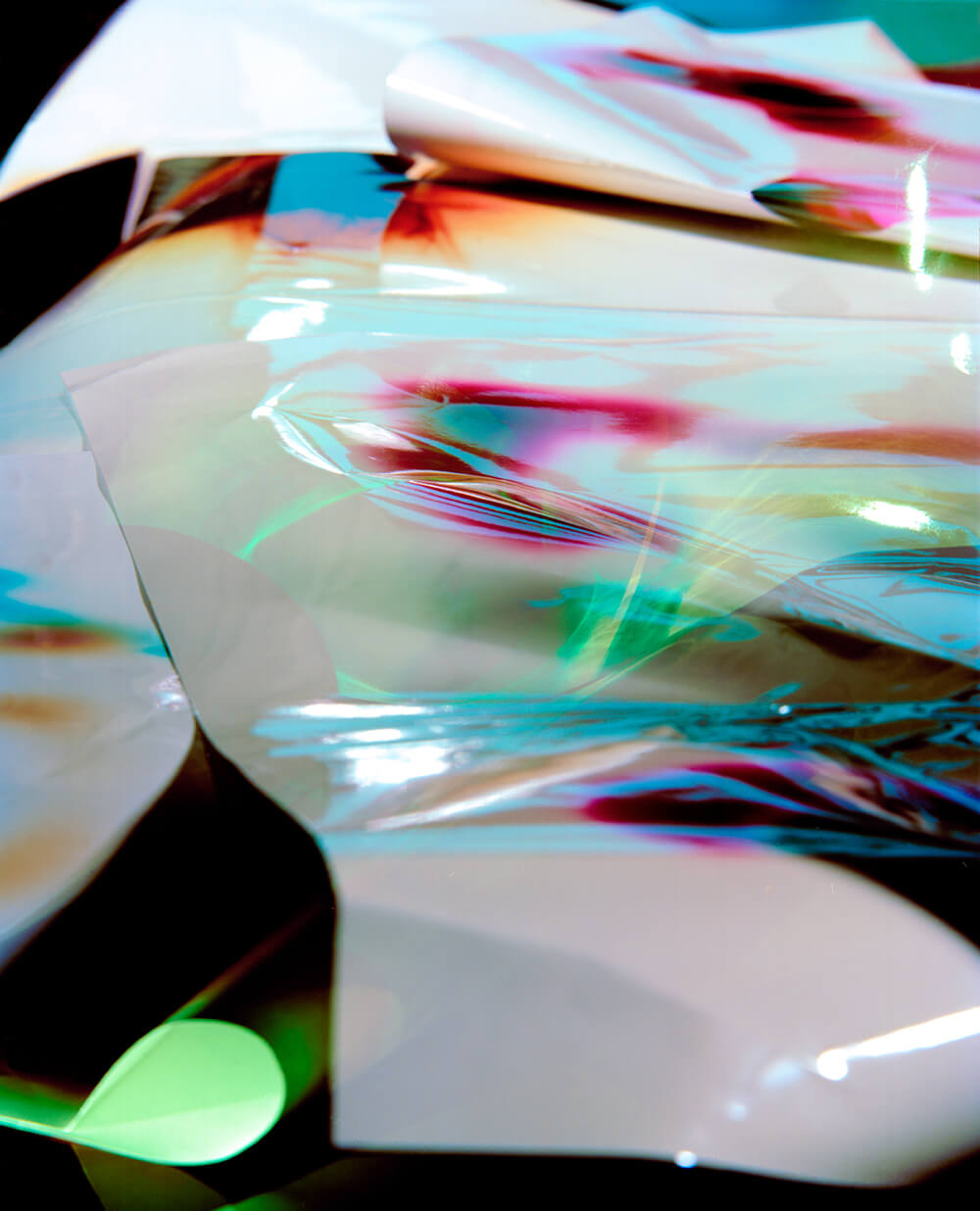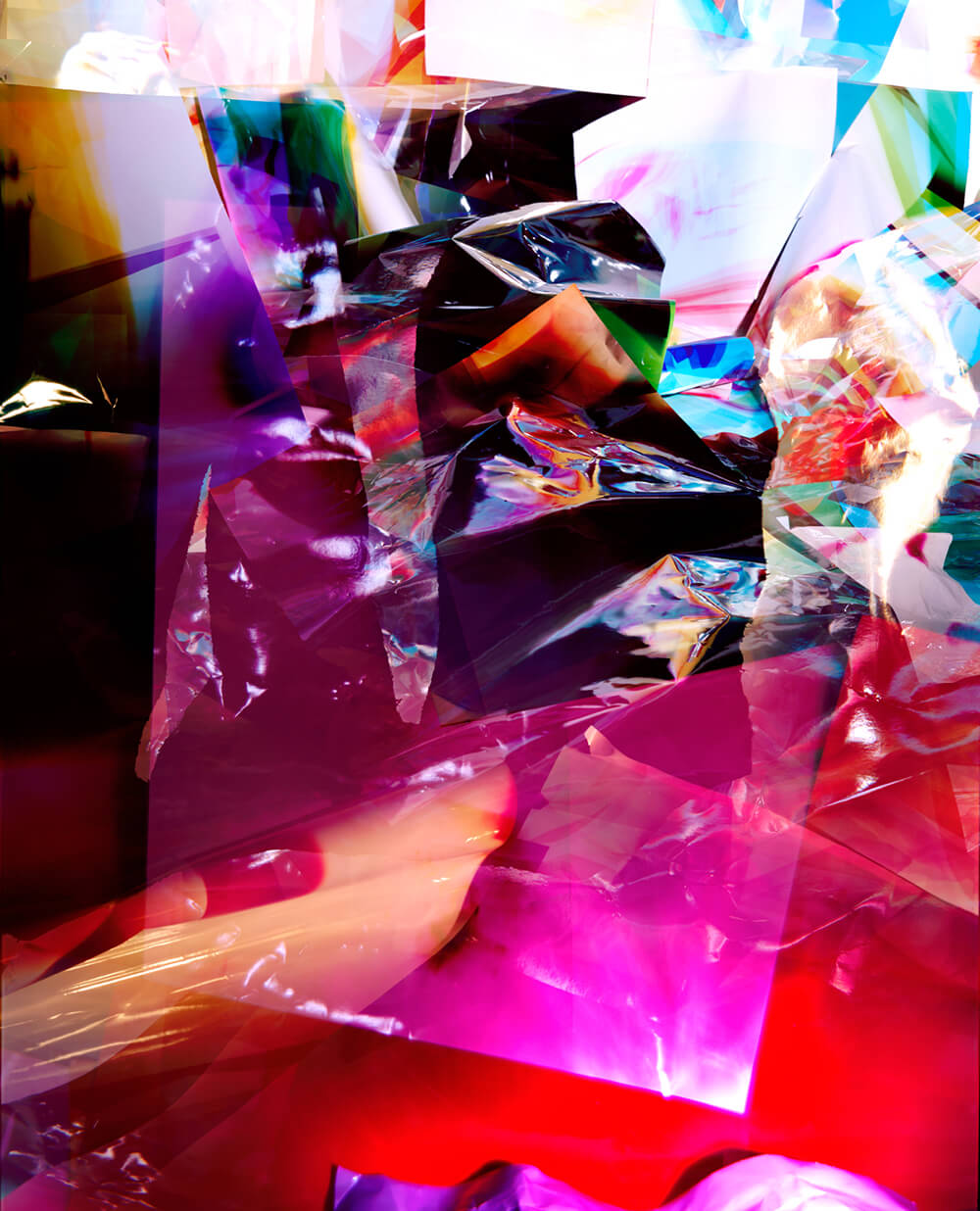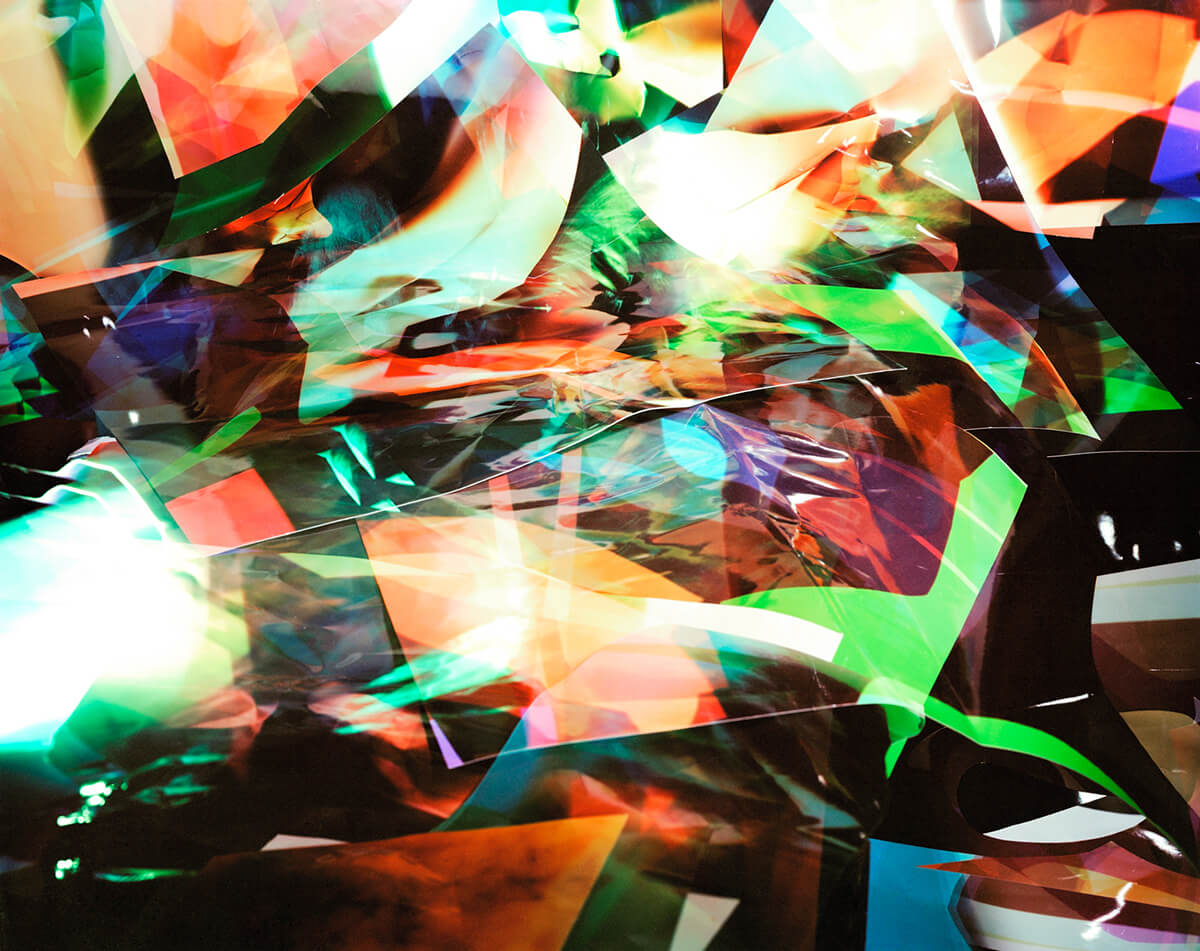INTERVIEW
Photographic Magic
WITH SAM MONTALBETTI
An interview with Sam Montalbetti
“I’m interested in how photography as a medium has a uniquely intrinsic ability to uncover/reveal. Photography is constantly showing states of the world, details and forms that are either unnoticed or completely invisible to human vision.”
Sam Montalbetti won second prize in our Colors competition with an image judge Damarice Amao praised for its “interplay of shapes, light and chance that helps us to see the world around us better”. In his accompanying statement Sam touched on his playful and unorthodox darkroom method, likening his process to that of constructing music, and so keen to know more we put some questions to him…
BANNER: SAM’S WINNING IMAGE, PLAYTIME #29
Hi Sam! Tell us a little bit about yourself and your route into photography…
I was born and raised on Salt Spring Island in Canada and am now based in Montréal. Both of these islands exist on unceded land of Indegenious peoples. Kanien’kehá:ka Nation is recognized as the custodians of the lands and waters of Tiohtià:ke/Montréal, and Salt Spring Island is within the traditional territories of the Lkwungen peoples.
I came to photography through a love of music, in that music was the first form of expression that I really latched onto, and ever since I was 11 years old or so it’s played an important part in my life. I’ve learned so much about myself and the world around me through listening to music, and it inspires me profoundly almost everyday. While making music never quite felt right, at some point in high school I tried photography, and I remember looking at images by Eliot Erwitt and Storm Thorgeson and realizing they were producing emotion in me, just like music.
I didn’t really start pursuing it for another few years. I went to university as a physics major, but was allowed to take the first photography class with students that majored in it. Everything we did was in the darkroom, which I had never used before, and I loved it. I love the hands-on aspect of it and there’s an immediacy one has with light in a darkroom that is hard to replicate. I was also introduced to the work of lots of photographic artists that I hadn’t heard of before – Jessica Eaton, Wolfgang Tillmans, Sophie Calle). That whole year really cracked the egg open for me and by the spring of 2016, I knew photography and art-making was my path. I’ve been on it ever since.
I’ve read you describe your work as a “form of psychedelic magic”. What does that phrase mean to you?
While I think it can give a viewer a good idea about the style or look of a lot of my work, it does a really good job of describing what excites me about photography in a broader way. From its etymology, “psychedelic” means to reveal or uncover (delos) in the mind, the soul or the spirit (psyche). While a good chunk of my work (Playtime being a great example) has a psychedelic style, I’m really interested in how photography as a medium has a uniquely intrinsic ability to uncover/reveal. Photography is constantly showing states of the world, details and forms that are either unnoticed or completely invisible to human vision. Things latent and outside of normal perception can be uncovered and shown to us by photography. For example, if we look at a really boring image like a selfie, we still might find something in the person’s face or the background that we didn’t know was there, but was there all along. Photography, along with an active viewer, has revealed it. Even if the image doesn’t look “trippy”, to me, there is a psychedelic quality to the medium in general. Things aren’t always what they seem.
The word “magic” has a pretty substantial place in photography – it’s long been a medium described as “magical” and in 2015 Charlotte Cotton wrote this amazing essay comparing photography to sleight of hand/close up magic. Being interested in art’s ability to engage our emotions (and in turn provide cathartic and healing experiences), I’m also interested in the similarities between the roles of artists and Witches and Wisemans’ mystical uses of magic; that is, to use their spells and supernatural abilities to help people deal with their anxieties and insecurities in life.
With magic there are invisible forces at play, and a surprise and perceived irrationality in the outcome. Those invisible forces in the case of your Playtime series are your working methods in and outside of the darkroom, and the irrationally is perhaps the playful, unexpected results. How do you go about creating these images, and where did the experimentation start?
These pictures begin in the color darkroom, where I make photograms (any photograph made without a camera) playing with light, color filters and the physicality of light sensitive paper. In my studio I cut, arrange, light and install these prints for the camera. Playing again, I photograph different arrangements on the same piece of film. This allows light and the prints’ colors, forms and positions in space to mix on the film.
The experimentation happens naturally. I remember altering images in photoshop in high school, and when I started using darkrooms the experimentation continued. I started making photograms before I knew what photograms were.

PLAYTIME #24

PLAYTIME #39

PLAYTIME #45

PLAYTIME #34
And with such an experimental approach, how do you judge when an image is ‘right’ or ‘finished’?
That’s mainly intuition. I work with photography as a site where intuition and curiosity are leading the way. Which isn’t to say projects don’t have their “goals” or “rules”, but guiding the creation, which “rules” to use and especially when an image is “right” or “finished” is intuition. It works like an internal arrow. I know when it’s pointing to something and when it’s not. I also get broader emotions like an excitement about the work or the feeling that I have to share it, like many artists. The more I’ve experienced these emotions and used intuition, the clearer they’ve become.
Are there any new techniques or ideas you’re playing with at the moment?
I’m always searching for and working with photography in ways that are new and engaging to me. I’ll leave details under wraps for now but keep your eyes peeled.
In your statement you describe the creation of music as an analogy for your work – created layered mixes of light as opposed to sound. Do you see parallels in the type of photographic art you create – dense, colorful, fun, trippy, non-linear – and the type of music that resonated with you?
Lots! Things I listened to in the studio and things I listen to now. I won’t be disclosing any specifics though; if an image of mine produces music in a viewer’s mind or makes them think of a specific sound, that’s a really special thing, and I want people to be free to make their own connections without any sort of input from me. I don’t want to muddy the waters.
Are you able to pick one or two favorite images and tell us what it is about those you particularly like?
I love all my pictures equally, though I can definitely single out Playtime#34 as there’s a small story about that picture specifically I like to tell.
While I was making it, on the final of 8 or 9 exposures, I completely screwed it up. I left the lens open (I use a 4×5 for these) and over-exposed it by 6 stops or something. To be clear, this is not a moment of “Oops! Oh well, happy accident tehehe”. It’s more like, “Oh my god, there’s no picture, oh god oh god oh god. I’ve ruined this whole thing, 4 full days of work. Oh no oh no oh no!!” but with a lot more curse words. I remember sitting on a couch in my studio almost pulling my hair out! I was so upset. So looking back and knowing that the picture not only came out but also came out strong enough to make the final cut…. It feels great.
And you’re exhibiting the work in Montreal at the moment. How has that experience been?
Amazing! Getting to have my work up in public is a huge privilege, it’s one of the best feelings in the world. Knowing that someone might come in and have a really meaningful experience with something I made…wow. That group show ended last month and there was a lot of really great work in it. I was psyched to contribute.

PLAYTIME #33

PLAYTIME #40

PLAYTIME #44

PLAYTIME #38
Are there other photographers, or perhaps artists more broadly, that particularly inspire you?
I certainly wouldn’t be here without Animal Collective…Their music is so so sick, and I learned a lot by listening to their albums and them talking about their approach in interviews. They’re artistic role models, but they’re not alone: Arundhati Roy, Lee “Scratch” Perry, Armand Hammer, The Sun City Girls, Anthony Jeselnik, Moor Mother, Alice Coltrane, Pink Siifu, Dorothy Ashby, Wolfgang Tillmans, Sun Ra, John Coltrane, Eiko Hosoe, Daido Moriyama, Ren Hang, Thomas Brinkmann, Jessica Eaton, Claude Cahun, Bret Easton Ellis, Julie Mehretu, Walead Beshty, Danica Lundy, Ilana Savdi, Sophie Calle, L’Rain, Patryk Stasieczek,Larry Madrigal, Jessica Auer, Black Dice, The Strokes, Chris M Forsyth, Summer Emerald, Sister Nancy, Mica Levi, GoodSadHappyBad, Tirzah, Alex Aposolidis, Dean Blunt, Beach House, Océane Buxton, PACKS, Eileen Quinlann, Clara Lacasse, Jerome Nadeau, Alvvays, AMM, MF DOOM, Glustick, magic777, The Wu-Tang Clan, Standing On The Corner, Earl Sweatshirt, Frank Ocean, Tyler The Creator, Chih-Chien Wang, Alice Cloutier-Lachance, Ryusuke Hamaguchi, Gary Winnogrand, Caroline Cloutier, Erin O’Keefe, Trevor Bourke, Le Massi, Flying Lotus, Elea Jeanne Schmitter, Wes Anderson, Justine Kurland, D’Angelo Lovell Williams, Philip-Lorca diCorcia, Weegee, J.J. Levine, Elliott Jerome Brown Jr., Michael Floeman, Adrian Villagomez… I could go on.
Play is at the heart of your process, and I’ve read you saying you want to make images that make people feel better. It’s a beautifully simple aim, and an important one, cutting through the pretension of a lot of art. Is it something you think about a lot?
Of course, if the work makes someone feel better, I’m psyched, but at the same time I’m definitely not sitting in my studio thinking “Oh yea, this one will make someone feel happy.” It’s not like that. I think, regardless of what one takes away from a piece of art, there’s a cathartic side that’s underlying the experience. For example, if a work scares me, if it makes me feel sad or angry, I find that there’s a comfort in experiencing these emotions through art or seeing them expressed. So, I want my work to make people feel something, but someone doesn’t have to feel this way and not that way. Emotional experiences are so tied to us as individuals, and I’m happy to leave it that way.
And finally, what next for you Sam?
I’ve got two group shows where I’ll be debuting my newest body of work “My Friend, The Wind” (named after an album by Sun Ra) in 2023. The exhibitions are called “‘Archipelago – Contemporary Art of the Salish Sea.” The first one will be at Mahon Hall on Salt Spring Island, BC, April 14th – 30th and the second will go from mid-September – late December 2023 in the San Juan Islands Museum of Art on San Juan Island, Washington, US. “Playtime#29” will of course be part of Life Framer’s traveling exhibitions and I’ve got a couple new projects that I’ll be submitting around to galleries.
